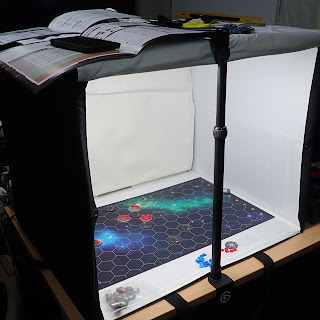Remote Zoom
One of the advantages of using a Blackmagic camera for live video work is that either remotely or via the ATEM I can control the zoom. This is the idea when I teach online and am the only one in the studio, as I can control everything.
PTZ can do the same, and if you are working on your own and want to change the view or the zoom, this can be achieved quite easily. I have seen many videos where the presenter changes the camera mid-production, leading to amateurish productions.
PTZ (Pan-Tilt-Zoom) cameras are often used in various settings ranging from surveillance to professional broadcasting. For a small amateur broadcast video or streaming operation, these cameras can offer several benefits but also come with some drawbacks.
Advantages
Versatility: One PTZ camera can cover a wide area thanks to its pan, tilt, and zoom capabilities. This is especially useful if you have limited camera operators or wish to cover multiple angles.
Remote Operation: PTZ cameras can be controlled remotely through specialized hardware or software interfaces. This allows a single operator to control multiple cameras without physically manning each one.
Preset Positions: Most PTZ cameras allow users to save specific pan, tilt, and zoom configurations as presets. You can switch between these presets quickly during your broadcast to make your production more dynamic.
Streamlined Workflow: Because one camera can fulfil multiple roles, it can simplify your production setup. This can benefit a small operation where ease and speed are crucial.
High-Quality Optics: Many PTZ cameras offer professional-level optics and image quality, which would benefit a high-quality stream.
Space-Efficient: Because one camera can cover multiple angles, you may need fewer cameras overall. This can save on physical space, which is particularly beneficial in a small setup environment.
Ease of Installation: PTZ cameras are often easier to install than a set of static cameras, requiring less cabling and fewer mounting locations.
Disadvantages
Cost: PTZ cameras are generally more expensive than fixed cameras. The upfront cost can be a significant factor for a small, amateur setup.
Limited Depth of Field: While the zoom function allows for a wide range of framing options, it can also result in a shallow depth of field, which might not be suitable for all types of broadcasts.
Complexity: Although PTZ cameras can simplify many aspects of production, they can also introduce complexity in terms of their operation and the coordination required to switch between multiple views effectively.
Mechanical Failures: The moving parts in a PTZ camera make it more susceptible to mechanical failure than static cameras.
Noise: Some PTZ cameras make noise when panning or zooming, which could be disruptive in a quiet environment.
Overuse of Movement: The ability to move the camera can be tempting, leading to excessive or distracting camera movement during a broadcast.
Single Point of Failure: If you're relying on one PTZ camera to cover multiple angles, and that camera fails, it could be a significant setback for your production.
Potential Lag: Some lower-end PTZ cameras might have a noticeable lag when panning, tilting, or zooming, which can be distracting for viewers.
Each broadcasting situation is unique, so the relevance of these advantages and disadvantages can vary. Carefully consider your specific needs, the nature of your broadcast, and your budget when deciding whether or not a PTZ camera is suitable for you.



Comments
Post a Comment